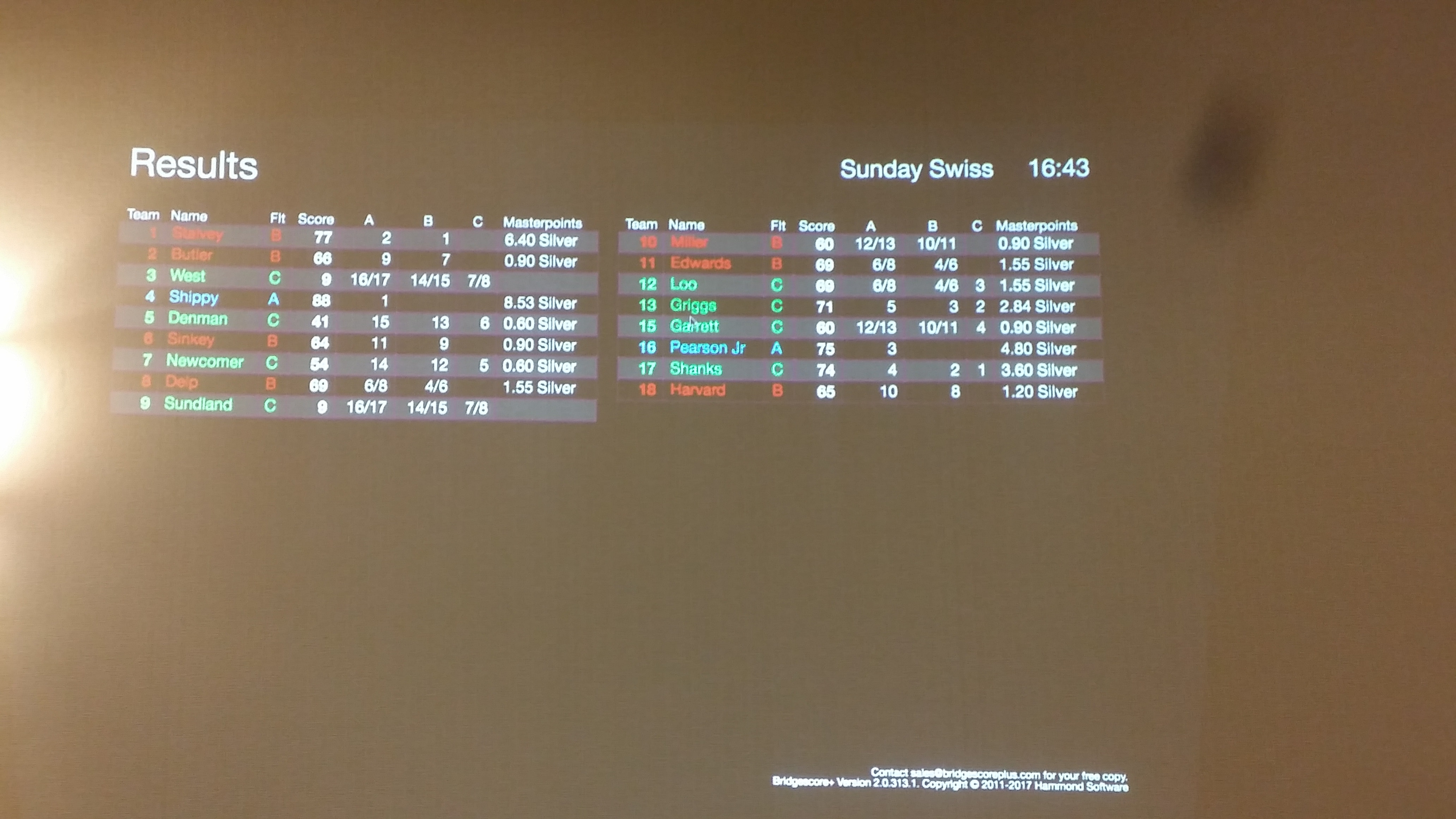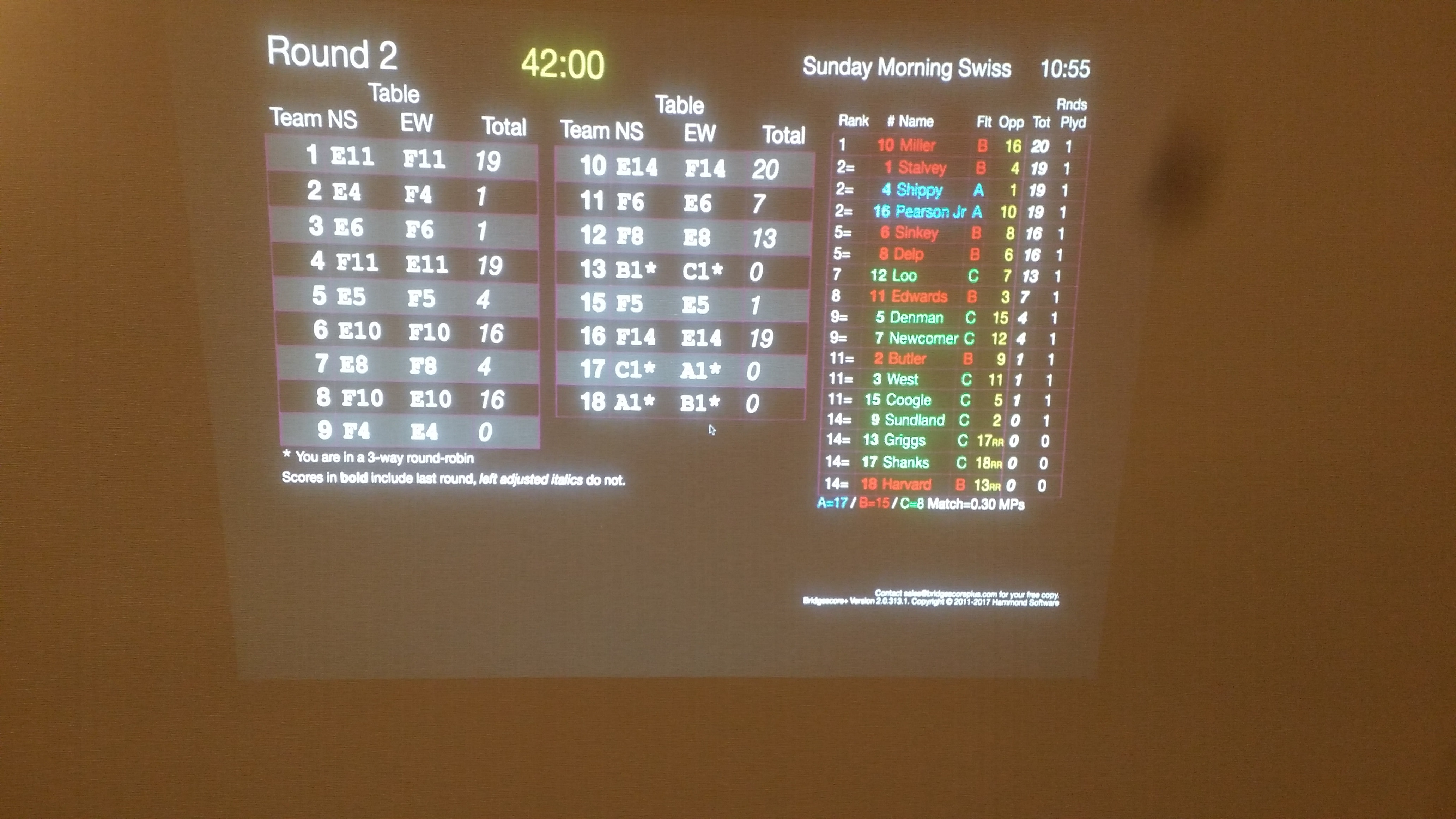
Nancy (ACBL TD) was there at 8:30 a.m. and told me where the projected displays would go. There was only 1 TD, 1 caddy for the entire day.
It took about 7 minutes to setup the projectors, power cords, computers, network. I brought two projectors, and computers to power each one. When I run Bridgescore+ on consecutive days, it takes about 7 minutes for Day 1 setup, but about 1-2 minutes for subsequent days. All I have to do is to power up the projectors and computers. It takes about 1-2 minutes for the projectors to warm up.
There was no Jeffreys Chart or Rack to put up. All assignments were on the projector. The results were also on the projector as well as the Masterpoints at the end of the event.
Open sales started at team 1. Inventory was E1-F8. About 16 teams were expected. The RR would be A1/B1/C1.
299er sales started at team 81. Inventory was C3-D6. About 4-6 teams were expected. The RR would be A2/B2/C2.
In Bridgescore+, it took less than 5 minutes to set up the tournament, set up two events and have screens projected with assignments for the teams. Table assignments were ready for when the first sale started. With prior knowledge , it takes less than 30 seconds to set up a new event.
Then the fun started. What happened next is reasonably typical. There are few perfect starts to a Swiss. Any Swiss software must be able to handle the common situations. Bridgescore+ has been designed this way.
A team needed a stationary with an electrical outlet. They were assigned to table F9 and were given team number 18.
After the sales were closed (9:30 start), there were 17 teams in the Open. Team 14 had not been sold. Team 13 was put into a RR with Teams 17, 18. All of this is trivial in BS+ and the screens reflected the correct round 1 assignments.
[TDs sell Swiss events in a non-contiguous fashion. The entry slips are numbered, turned over, and shuffled. When you buy your entry you get a random number. This is how TDs avoid the problem of players trying to buy an entry immediately following a weak C team. A better solution to the problem is Bridgescore+. Sell the entries in contiguous order, 1, 2, 3, etc. After sales are complete, ask Bridgescore+ to assign matches by random for round 1. Bridgescore+ can also assign round 1 using an alternative approved ACBL method which matches A teams against A other teams, B teams against B teams and C teams against other C teams. This would seem fairer to all teams for the first round.]
For Round 2, Nancy now knew the exact space and wanted to spread the players around the room and also to keep them away from the doors. The Round 2 inventory became E4, E5, E6, E10, E11, E14. No problem for BS+. Inventory was set up for Round 2. As Round 1 results were entered, Round 2 assignments were automatically posted. There is no human involvement with the projectors or the computers connected to the projectors. One match reported late. BS+ records the time stamp when the scores was entered. The TD wanted a way to mark Late plays on the projected display. This will be added to the next release. Teams will now know that they have a late warning and the next late report will be a 10% VP penalty.
For the 299er Swiss, there were 4 teams. They will play a RR format each team playing each other twice in the 6 round event. Tables were reassigned so that each team had a permanent home table (D1, D2, D3, D4) and the EW pair went to the appropriate table. Again, all of this is easy in BS+ and the event was completely set up during round 1.
The caddy picked up the entry forms. For BS+, I like to get the entry forms as early as possible as we can start entering names before the event starts. This is not done with ACBLscore. The TD decided against early pick-up of entry forms. She knew that the table movement would be a little different so the caddies picked up the forms after the event start.
Name entry occurred during Round 1. There were the usual errors. For example, one player entered the wrong number – R243871 instead of R242871 (this was not the actual entry, but shows what the problem was). BS+ can enter players by ACBL number or name. At some tournaments I have used caddies for data entry. The Bridgescore+ data entry screens are much easier to use than ACBLscore. This allows the TD to spend more time on the event. Of course, the TD will always check the data once it has been entered.
The 4 teams in the 299er game needed to be stratified. The TD made the decision to turn this into a 2 bracket, 0-300 and 0-150 event. This will maximize the MP awards for the players. Bridgescore+ has its own masterpoint API/engine so it was easy to determine the best strats to award the most masterpoints.
The late result for the Open event was entered at 10:36:33, all results should have been reported by 10:34:00. BS+ records the time stamp of all result entry. BS+ allows the TD to issue adjustments for late plays. The first time is a warning, per ACBL regulations. A second time is an automatic penalty. She notified the teams responsible.
11:50 TD complaining that, “I’m not used to not having anything to do”!
Which was true – no Jeffreys chart, no rack, no re-racking after each round. No questions on how each team were doing. All that was needed was to enter the score into Bridgescore+. Bridgescore+ then automatically handled matching, table assignment, movement to next round etc.
BS+ ran both events.
We compared the masterpoint calculations from BS+ for both events with the masterpoint assignments from David’s spreadsheet. They matched.
After the event was over, Bridgescore+ generated an ACBLscore game file for each event. This was imported into ACBLscore. The masterpoints were verified (they matched). The game file was sent to ACBL Live.
I had worked earlier that week with the ACBL IT department to verify that the game files generated by Bridgescore+ would be imported to ACBL Live.
The players loved the projector – no need to read the small cards used in the rack. BS+ keeps a running score of all teams on the projector so all teams knew their scores and placing.
At the last round, players stand around the projector and watch how the final results unfold.
BS+ printed both a roster and a masterpoint chart which were hung on the wall.
The game finished on time. The only complaint was from the TD that she wasn’t used to having nothing to do!
Some pictures from the event. The actual projected image is a lot sharper. My phone camera is old and does not focus too well.
From the Open game during round 2. It shows the running score, the strats, the table assignments:

Round 6. 30 minutes to the end:
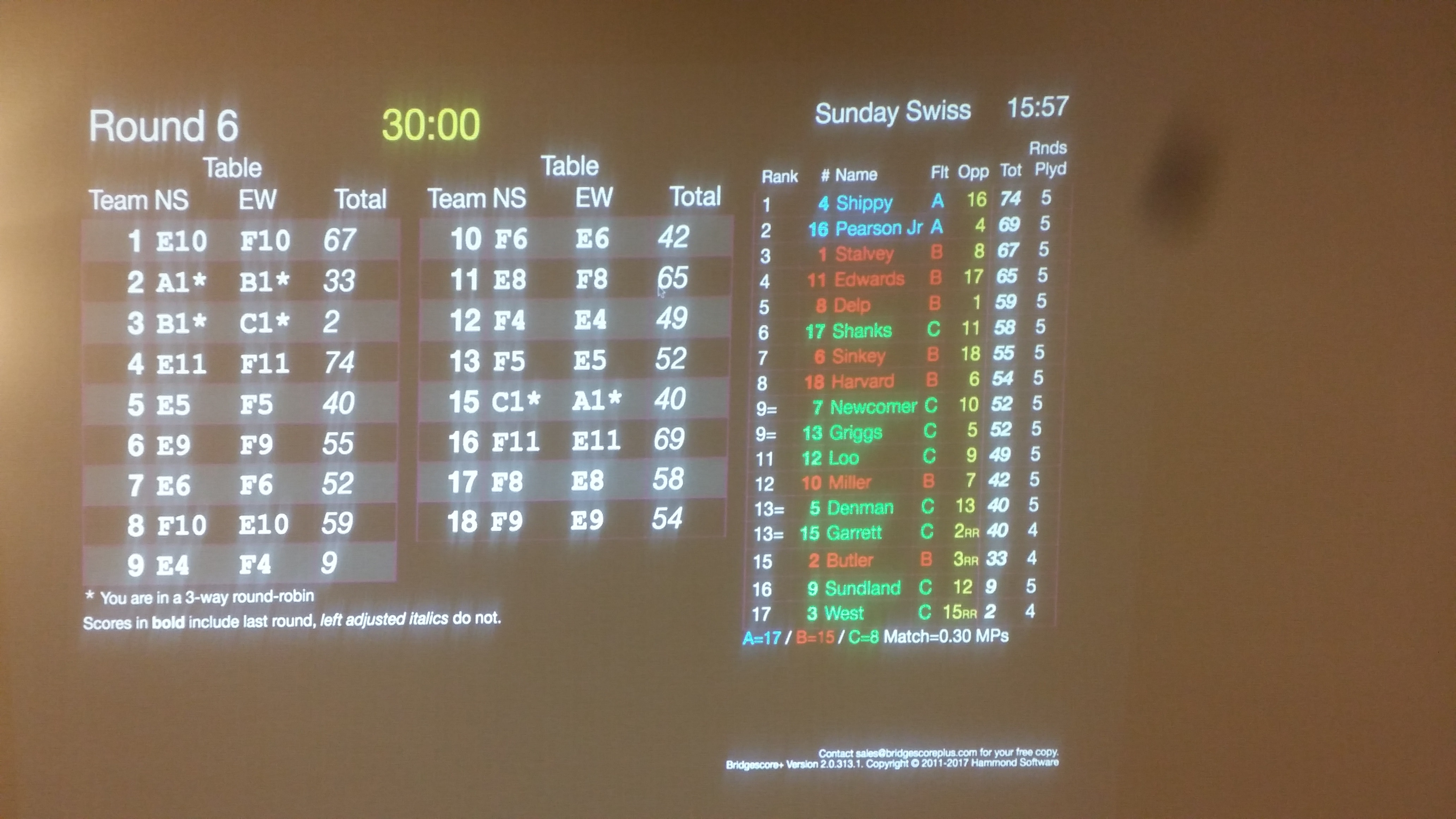
Players looking at the open results. Again, cheap camera, the room was not that fuzzy. The two players on the left are looking at the projected results from the 299er game.
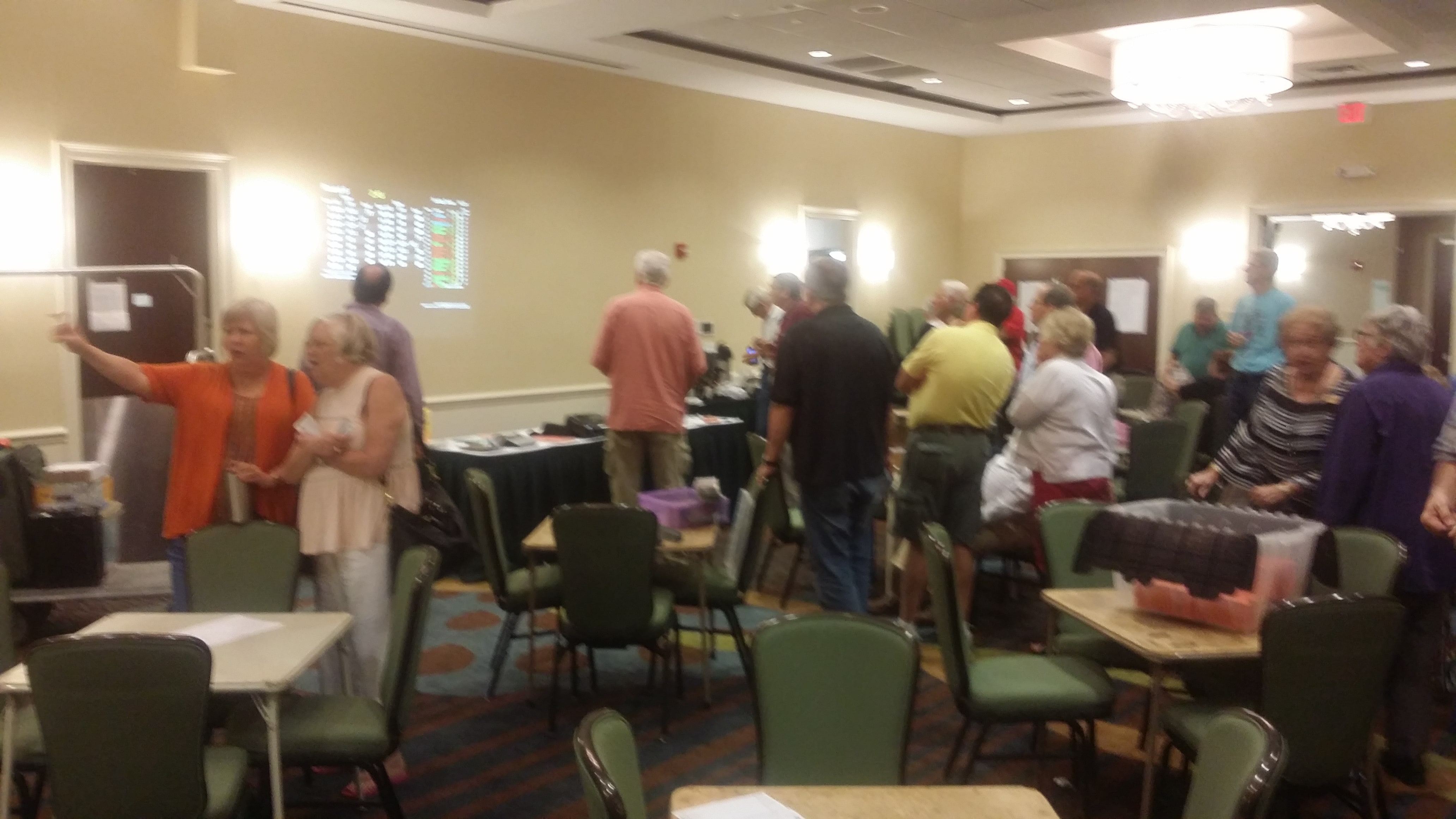
Final results from the 299er game showing the MPs won:
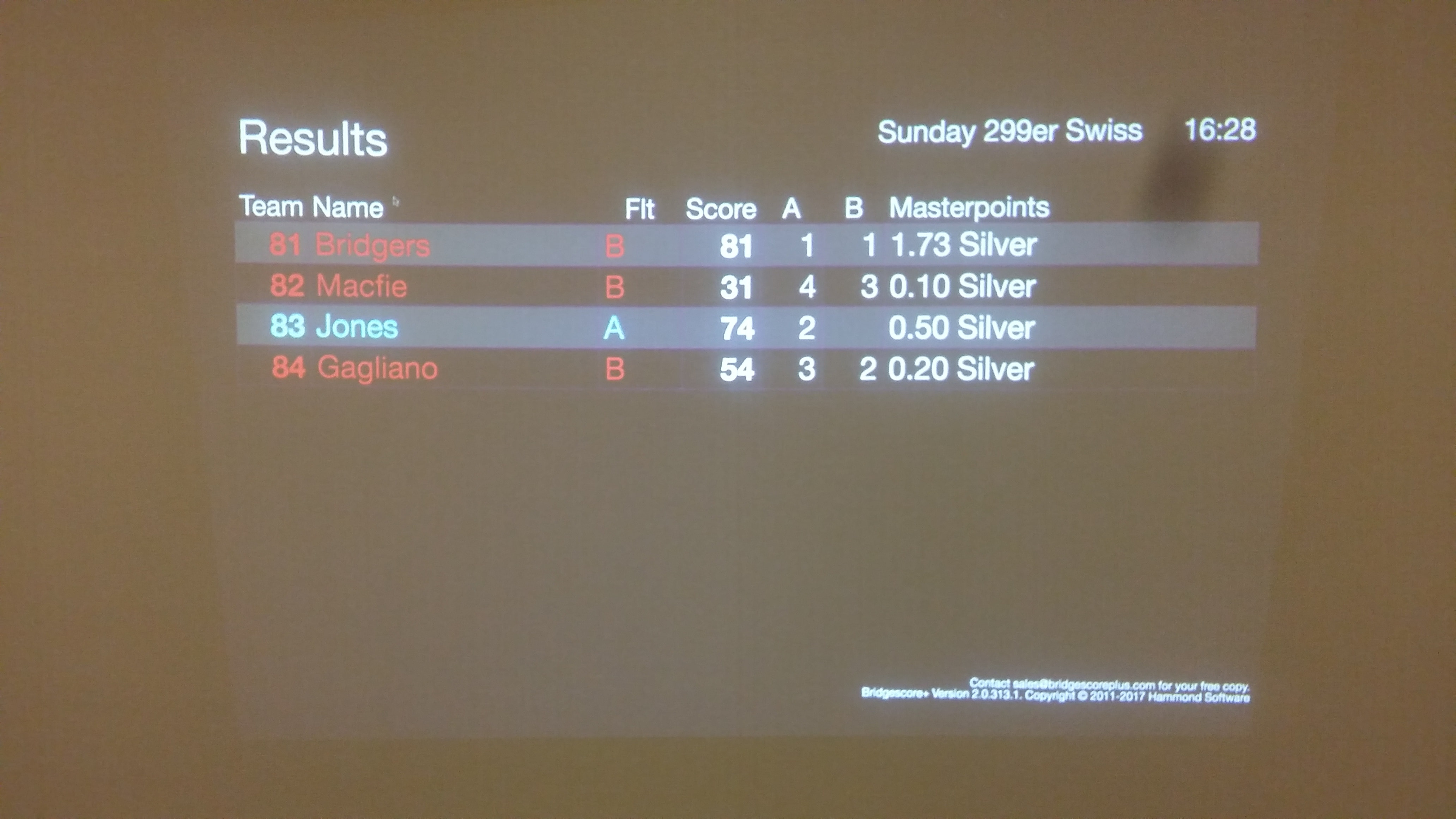
Still have to print the masterpoint awards for players to see. No matter what some people like the hard copy.
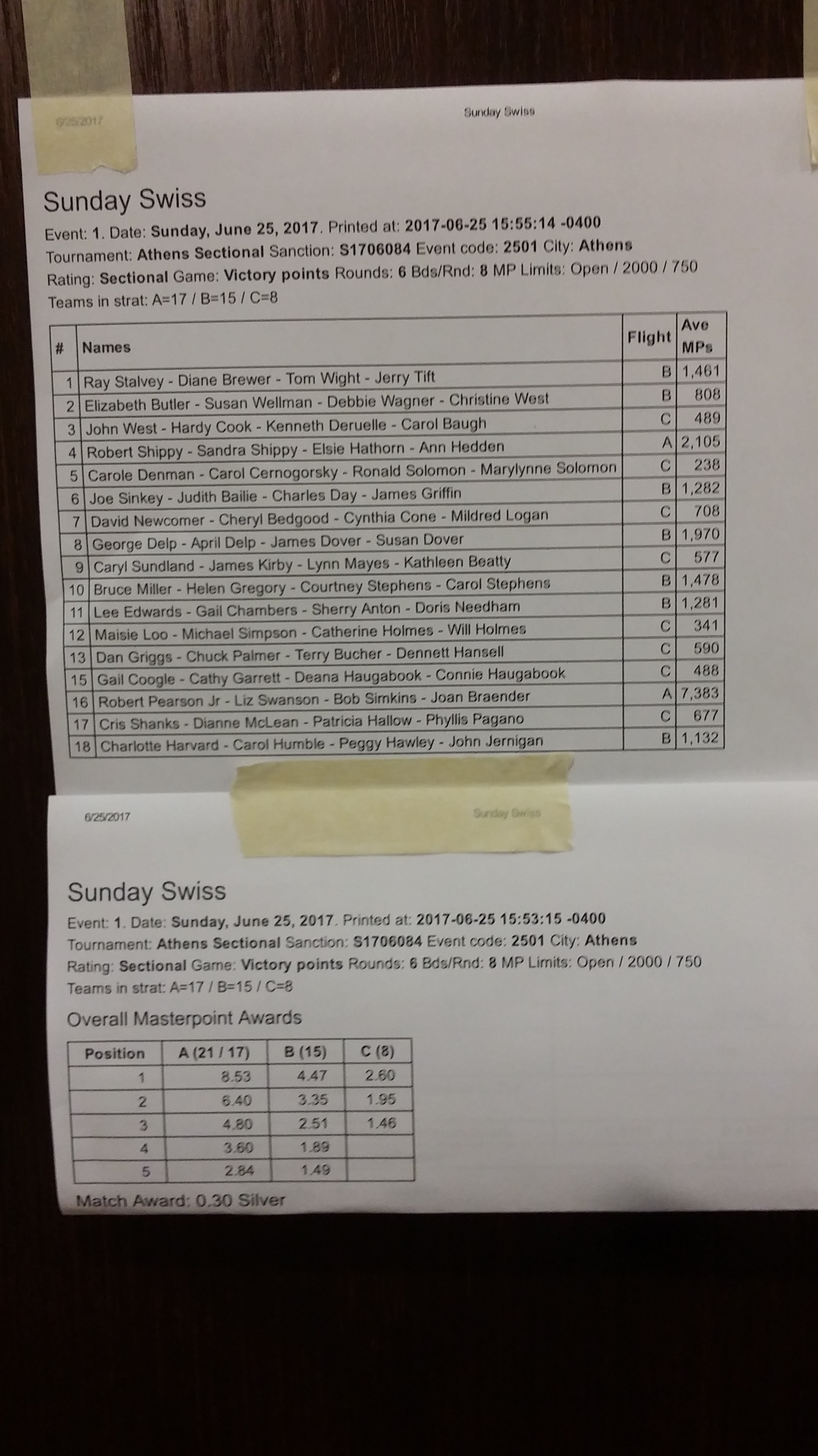
The event was run on a single computer. It is even possible to run the entire event from a tablet. This is a Samsung Galaxy. Nancy used a typical ACBL Windows machines to access the game. I used a Mac. Walking around the room, I used a tablet. Software is web based – it runs on all platforms with a modern browser. This is the table showing the final masterpoint awards for the Open games:
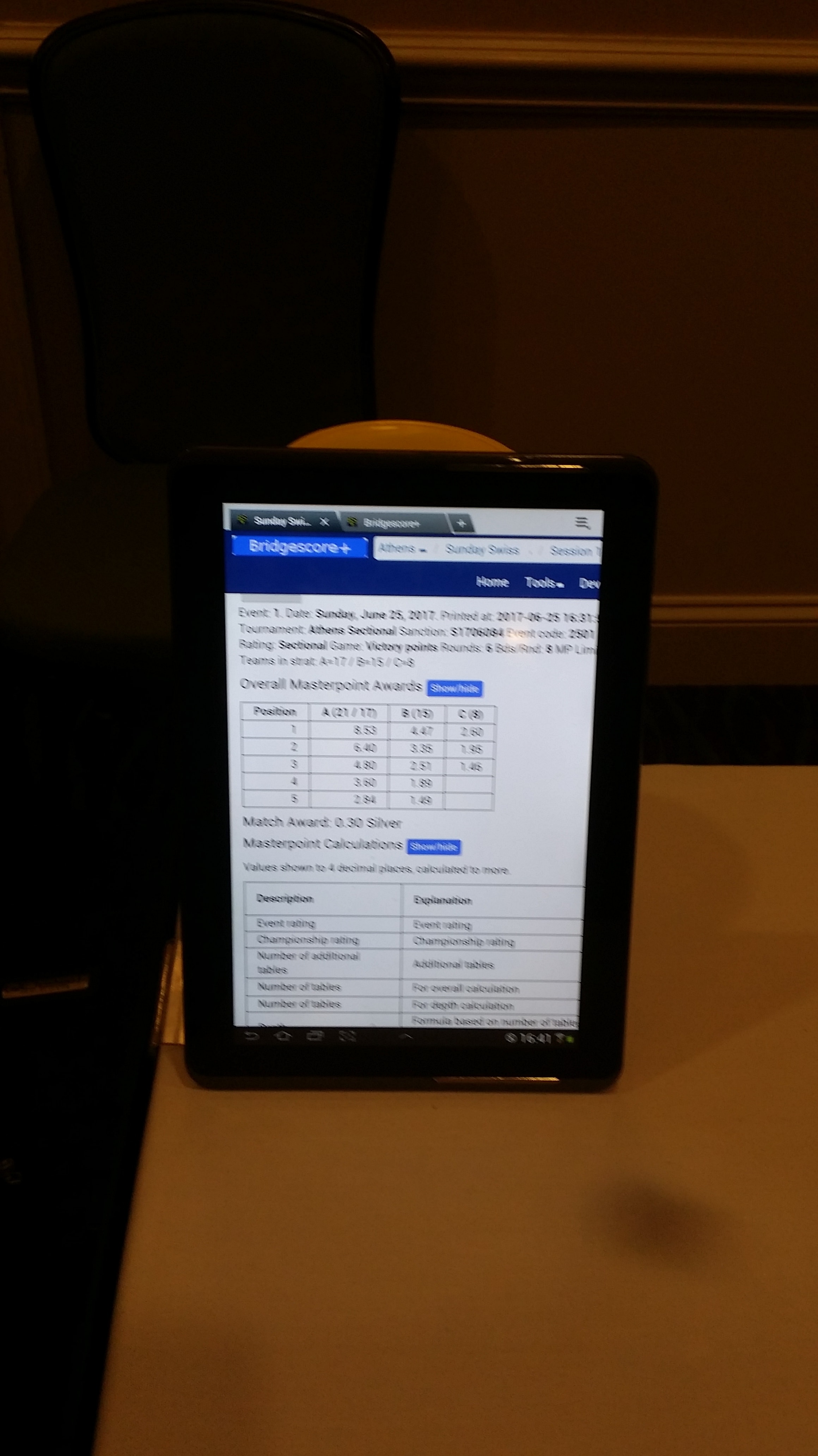
Final results for the Open games shown on the projector:
